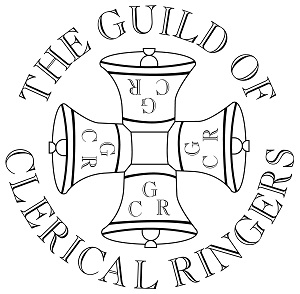A review of The Voice of the Church by Nigel Stock
This excellent publication is produced by ‘The Ringing World’ and authored by four ‘Clerical Ringers’ who are members of the Guild of Clerical Ringers. It is a wise and thoughtful work that combines theology, history and very practical advice. The unique perspective of the clerical ringer is the ability to understand the viewpoint of both ringer and clergy in the shared space of the Church building.
It is appropriate that the authors fully understand the fact that many ringers are not church attenders and that many regard ringing first as an all absorbing hobby. All ringers however contribute to the life of the church, and indeed the very sound of bells intimates that there is life in the Church!
The section on the history of ringing, and how it evolved into the art of change ringing distinctive to this country will encourage a wider understanding of the precious heritage we have in the towers of our churches. The way that bells have interacted in the liturgy of the church is well described. The medieval church used the ringing of the bells at particular points of the liturgy, sounding out to a wider world what was happening in the worship within the building. The use of bells as a call to worship developed later.
There is a very helpful reflection on ‘soundscapes’ and how much bells add to the location in which they are situated. They provide a reassurance and sense of continuity and hope that is appreciated by a far wider constituency than the local congregation. The way in which God is praised by music and sound in the Bible is outlined, also the spiritual resonance that bells offer within a ‘soundscape’. I particularly liked the phrase and idea of a ‘sonic parish’!
However there is also a recognition by the authors that not everyone appreciates the sound of bells. There is good advice in the booklet about dealing sensitively with those who have such difficulties. This is not a new phenomenon. I was once fortunate to be the incumbent of a parish in the North East which had a very fine ring of bells and a very capable band of ringers. The bell tower was built in the Georgian period. There was a record in the parish history of an objection lodged against the faculty to build the tower. The canny local objectors stated it would be cheaper to buy every resident a “well regulated timepiece” to tell them when the service was, rather than be summoned by bells!
In recent times bells have rung out on momentous national events, marking the death of a long reigning and much loved monarch and celebrating the crowning of her successor. Those occasions of ringing have a wide appreciation. It is the hope of the authors that the sound of bells can be a bridge between the church and the wider community, a sound inviting people to greater spiritual awareness. A telling sentence in their conclusion is; “This can only be done if church leaders recognise that many ringers stand on that bridge themselves, often willing to support the life of the church if not personally committed to a life of faith.” The tips for good engagement at the front and back of the book for both clergy and ringers are very helpful.
A fine example I have encountered of the way bells can offer solace and support to a community and demonstrate pastoral care occurred during the last serious Foot and Mouth outbreak in the UK. I was in an area where the dairy herd had been devastated in a previous epidemic, and to avoid a repeat of that there was a very severe lockdown on dairy farms. As the weeks wore on the strain on farming families became greater. In order to show solidarity with them, and to ensure that they were appreciated and supported, it was agreed that the church bells of the diocese would ring out at a certain time. The farming community was informed by phone and email, and they were also assured that they would be prayed for at that moment. It turned out to be an enormous morale boost for those families. I don’t suppose every farm was within earshot of bells, but the vast majority were. What other sound would have been capable of conveying so much?
I commend this publication wholeheartedly, and can only concur with the authors that “Change ringing is something to be celebrated, nurtured, discovered and promoted.”
+Nigel Stock
Somerset
